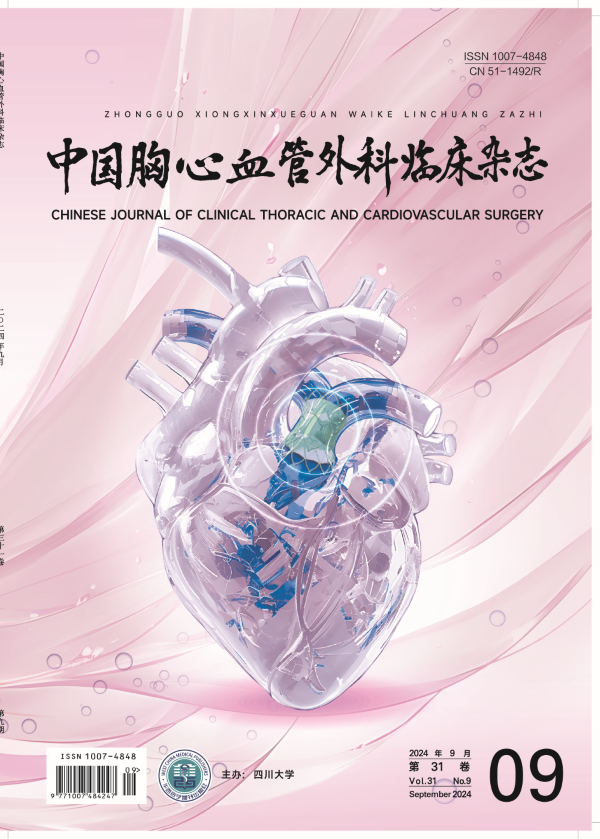| 1. |
Schuchert MJ, Pettiford BL, Keeley S. Anatomic segmentectomy in the treatment of stage I non-small cell lung cancer. Ann Thorac Surg, 2007, 84(3): 926-932.
|
| 2. |
Wahidi MM, Govert JA, Goudar RK, et al. Evidence for the treat-ment of patients with pulmonary nodules: when is it lung cancer? ACCP evidence-based clinical practice guidelines (2nd edition). Chest, 2007, 132(3 Suppl): 94s-107s.
|
| 3. |
Gomez-Saez N, Gonzalez-Alvarez I, Vilar J, et al. Prevalence and variables associated with solitary pulmonary nodules in a routine clinic-based population: a cross-sectional study. Eur Radiol, 2014, 24(9): 2174-2182.
|
| 4. |
Shi CZ, Zhao Q, Luo LP, et al. Size of solitary pulmonary nodule was the risk factor of malignancy. J Thorac Dis, 2014, 6(6): 668-676.
|
| 5. |
严四军, 曹祥, 邓波荣, 等.恶性肺小结节的危险因素分析及预测模型的建立.中国胸心血管外科临床杂志, 2013, 20(4): 441-445.
|
| 6. |
刘明, 姜格宁.孤立性肺结节的良恶性鉴别及处理策略.中国胸心血管外科临床杂志, 2014, 21(1): 102-106.
|
| 7. |
奚小祥, 吕必宏, 何光明, 等.孤立性肺结节早期诊治的临床策略.中国胸心血管外科临床杂志, 2014, 21(6): 793-799.
|
| 8. |
Zeiher BG, Gross TJ, Kern JA, et al. Predicting postoperative pulmonary function in patients undergoing lung resection. Chest, 1995, 108(1): 68-72.
|
| 9. |
Kearney DJ, Lee TH, Reilly JJ, et al. Assessment of operative risk in patients undergoing lung resection. Chest, 1994, 105(3): 753-759.
|
| 10. |
Miller JI, Hatcher CR. Limited resection of bronchogenic carcinoma in the patient with marked impairment of pulmonary function. Ann Thorac Surg, 1987, 44(4): 340-343.
|
| 11. |
Markos J, Nakahara K, Ohno K, et al. Preoperative assessment as a predictor of mortality and morbidity after lung resection. Am Rev Respir Dis, 1989, 139(4): 902-910.
|




